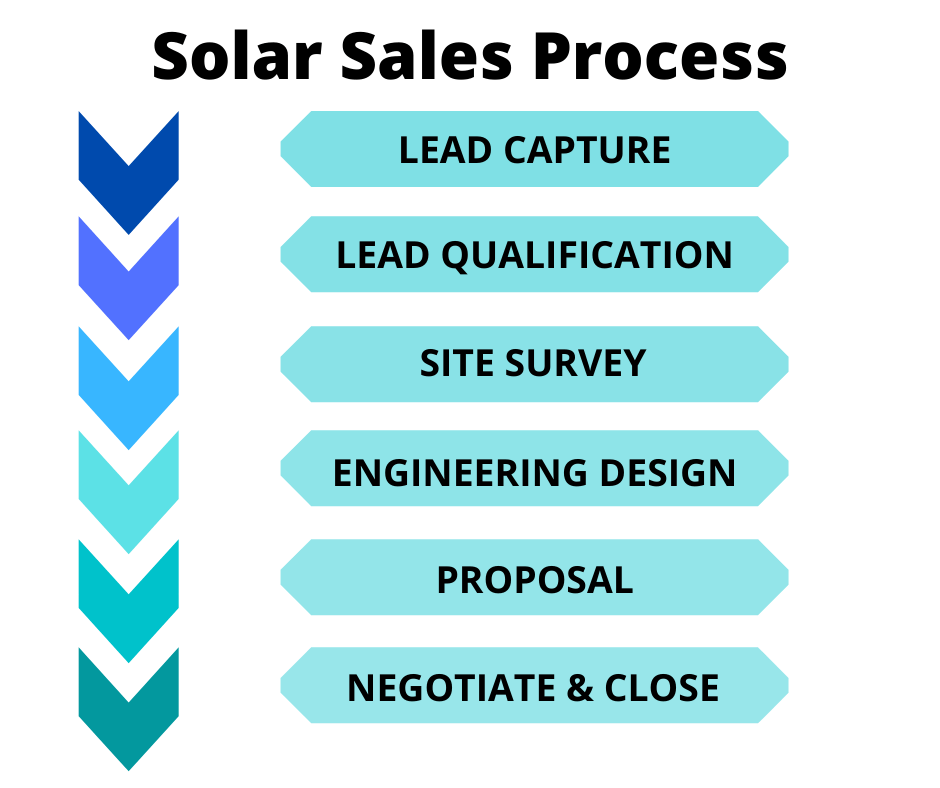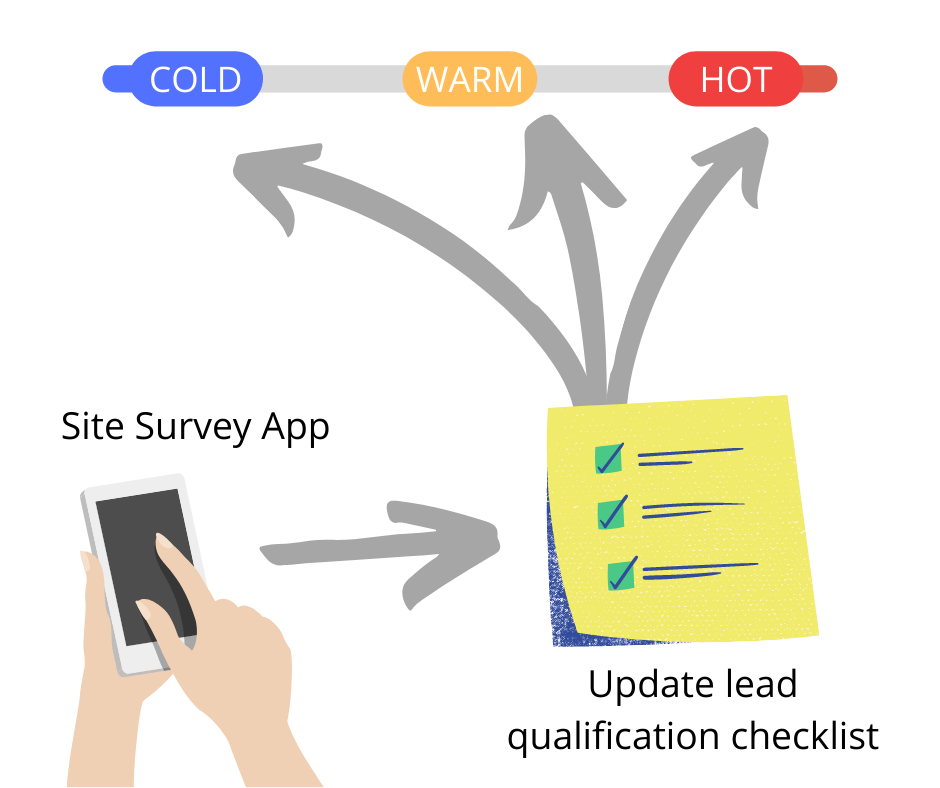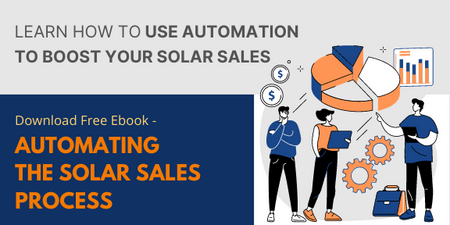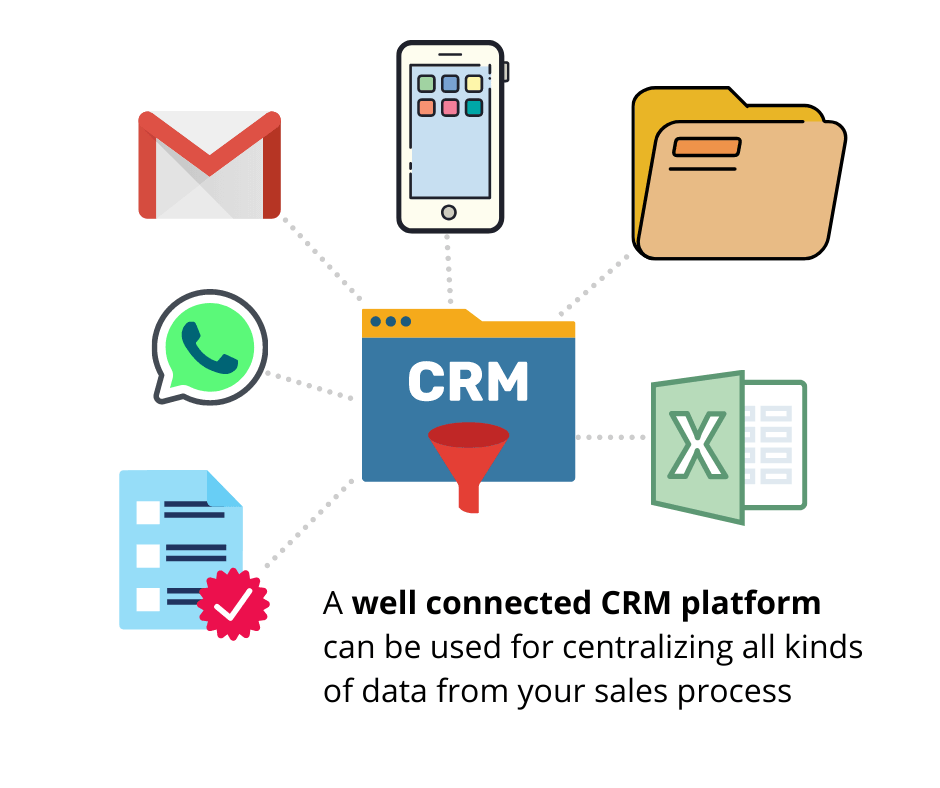The competition in the solar industry is increasing day by day. Because of this increase in competition, it has become important to move fast if you want to close a sale with a potential client. Your solar sales process is the deciding factor in the success of your business.
A well-planned solar sales process strategy can help you convert your potential lead into a client. It will also help you save valuable time.
Therefore it becomes important to look at each step of the solar sales process and address the challenges one by one.
Table of content
1. Solar sales process
1.1 Lead Capture
1.2 Lead Qualification
1.3 Site Survey
1.4 Engineering Design
1.5 Solar Installation Proposal
1.6 Follow ups and Negotiation
2. A customized solution for solar sales process
Solar Sales Process
Let’s explore the peculiar aspects of typical solar sales process and challenges associated with it.
Lead Capture
Lead capture is the first step in the solar sales process. It’s when you capture personal information of your leads like name, contact number, address etc. from people visiting your website or social media pages etc.
When you are generating leads for your solar business, you will need to capture their requirements, desired solution type (on-grid / off-grid, etc) apart from basic contact information.
The more information you have, the easier it’s going to be when you start talking to this prospective customer.
Whenever you capture a lead, always be clear about your purpose and the objective. Make sure you are offering something valuable in return for personal information.
Do not ask for too many details the very first time. That might turn away some potential buyers. Rather, start by getting basic contact details like email or phone. Then nurture these leads to pull out other details from them one by one.
Lead Qualification
Lead capture alone is not enough, you need to qualify them to determine whether they are ready to buy or not.
You can ask following questions for lead qualification –
- Do the leads need your product?
- Do they have a budget?
- What is their level of urgency?
- Do they have financial resources to invest?
- Do they have enough area for solar installation?
As the competition is increasing it has become very important for you to figure out which leads to focus on and which lead to let go. If you spend your time on leads that won’t convert, your competition will snatch them away.
You can work on high-quality leads if you have a clear picture of all your leads and their likelihood of making the purchase. This ensures that profitable opportunities are not lost to competition because of unresponsiveness from your team.
You can later nurture the leads which are not ready to make the purchase using various marketing techniques.
Customer Meeting / Site survey
After qualifying your leads you can contact them and send a sales engineer to the site. He will then do a site survey to evaluate whether the site suitable for solar installation.
The sales/site engineers will evaluate the area available for installation and the condition of the roof. They will discuss with your clients their expectations, requirements, budget, etc.
The amount of details a site surveyor collects depends on the scope of the project. Industrial and commercial entities involving a lot of equipment and appliances might require a detailed analysis. Small residential projects require a basic analysis.
While up on the roof, the engineer will note all the important things, for example – the overall dimensions of the roof, slope angles, locations of the chimneys and vents, and the overall roof thickness.
The engineer will look for following things
- Is the location suitable for installation of solar panel
- Is the condition of the rooftop good enough to install solar panels
- What and where are the shaded areas that might fall on proposed Solar arrays during day time with maximum sun
- How to connect existing electric system with the solar PV system
- What is the energy need of the customer
Engineering Design
The next step in the solar step process after site survey is engineering design. Once the site survey is completed, all the information collected during the survey is then sent to the engineering team.
The design engineer will then analyze the roof area available at the site of installation. He will then decide how powerful the system should be.
Various factors are considered during the design process. However two of them are the most important –
- Is there sufficient roof space available to install the solar panels?
- What is the amount of electricity consumed each year?
Your client’s rooftop may be occupied with several other types of equipment like chimneys, vents, roof-mounted equipment, etc. The design engineer will have to identify which obstacles are immovable and which can be covered by the module mounting structure. They will also have to meet the building code requirement.
Different solar design tools are used for estimating the viability of solar system designs. Installers can combine the data from these tools with aerial imagery to lay out solar system designs on your roof and calculate how much electricity the system will generate.
Based on this design, material (panels, inverter, structure) required and correspondingly overall project cost is determined.
Solar Installation Proposal
Based on the material and costs determined at the engineering stage, you can create a solar installation proposal.
Typical contents of solar sales proposals are –
Company Profile
You can use the company profile section to establish credibility and trust around your business. If your business has been operational for a while then you can talk about your past experiences, past projects, recognition over the years.
Project or Requirement Details
You should start the proposal with the details of the proposed solar project. You should specify your understanding of the requirement made by your client.
Solution Details
This is certainly the most important part of a proposal. It should cover details like –
- Customer requirements and site details captured in site survey
- Scope of work – all estimated activities
- Project schedule
- Bill of materials (BOM)
- Preliminary solar PV design (if applicable)
- Simple sketch, schematic of the proposed installation
- Details of important material items – PV panels, inverter etc.
Financial Analysis
You will mention detailed pricing for all the material, installation work and any other services in this section.
Use this space to provide a basic return on investment (ROI) analysis for the customer. This is in fact important to convince homeowners who may not do an ROI analysis on their own.
Terms and Condition
This section will include details of the contract, guarantee/warranty, payment terms, taxes, duties, freight charges , if not already covered in financials.
Contact Details
Provide contact details for the sales office and head office of your company.
You will then send this proposal to your client via email
Follow ups and Negotiation
Once you have prepared and sent the proposal to your clients, they will check the proposal properly. You may have to clear the doubts that your clients may have.
Multiple follow ups and a few rounds of negotiation might be required before they accept your proposal.
A customized solution for solar sales process
Some challenges are quite unique to the solar sales process and your sales management / CRM tools must be customized to answer these challenges.
On top of that, each solar business has a unique sales process and in an ideal world deserves a fully customized platform that adapts to the nuances of their own sales process.
Solar CRM solves this problem by using Google drive apps and other popular work management tools as building blocks and by connecting them with customized workflows. This enables 100% flexibility to give you a fully customized solution as per your own sales process.
But you don’t have to start with a blank slate. Our solar CRM solution has default workflows that are already fine tuned to solve most of your challenges. This CRM also integrates well with our solar ERP software to enable seamless work tracking for your solar EPC team.
If there’s anything that you don’t find in our default solar sales process workflows, you can contact our support team and they will add specific customization to your account to modify the app as per your requirements.





